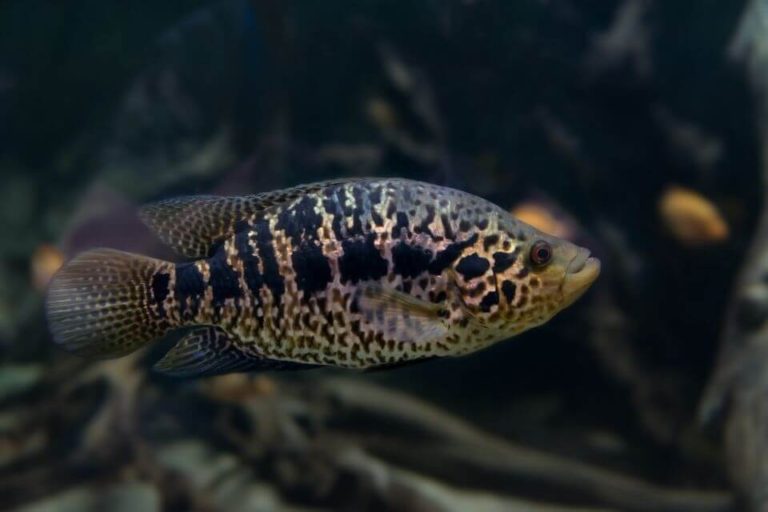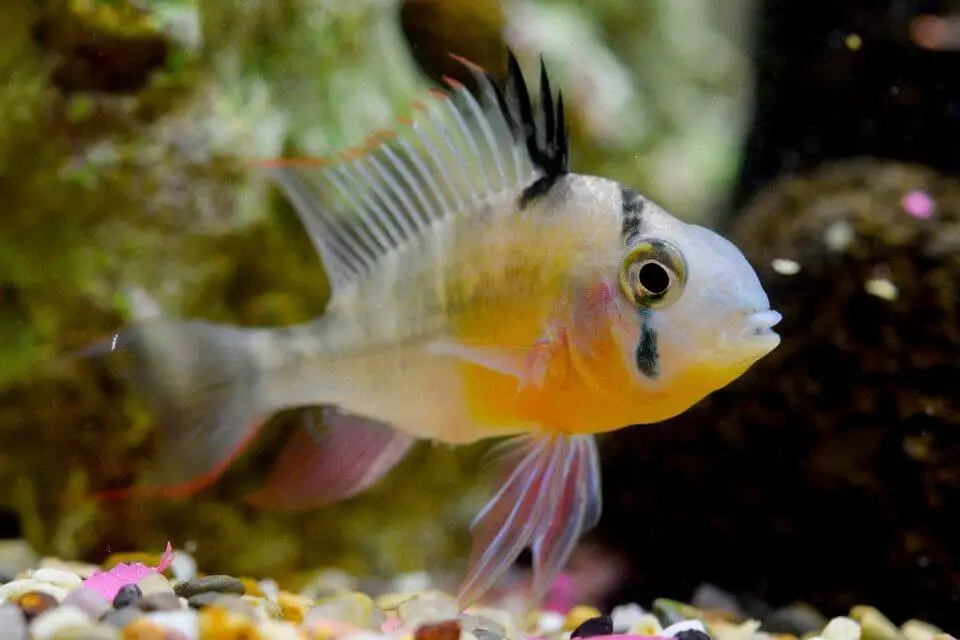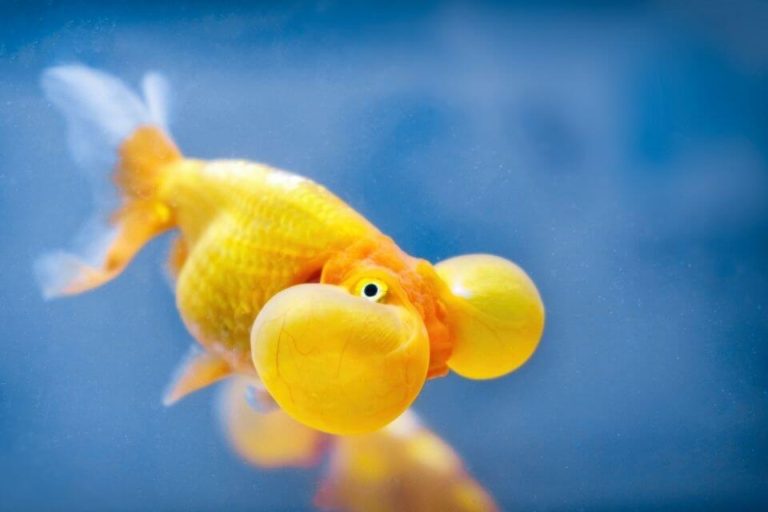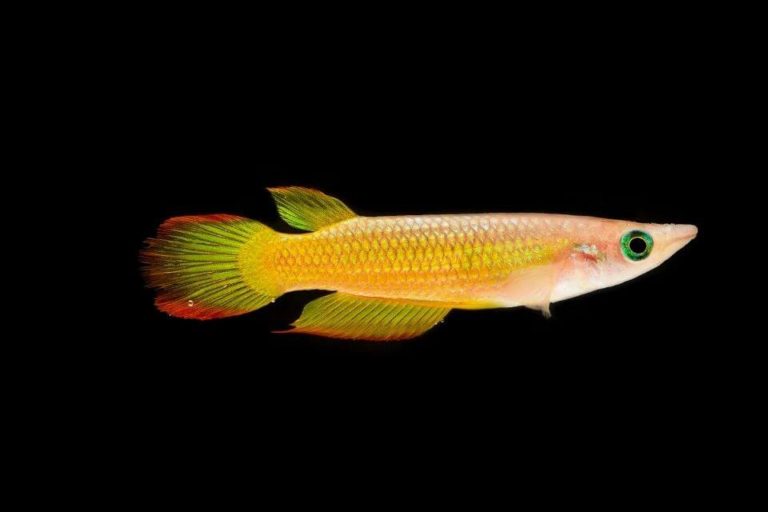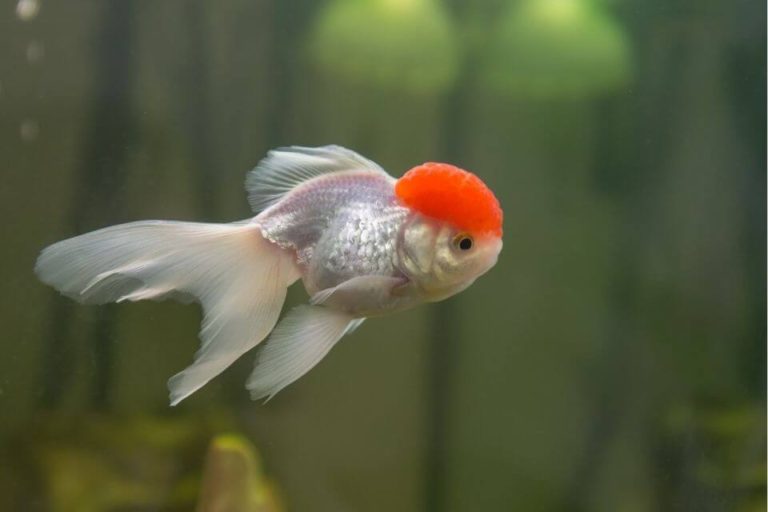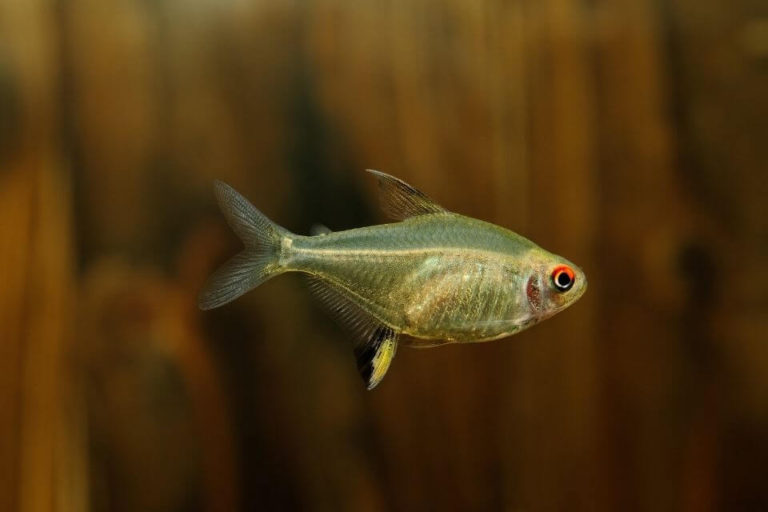Clown Loach Care Guide: Task Setup, Diet, Breeding and Tankmates
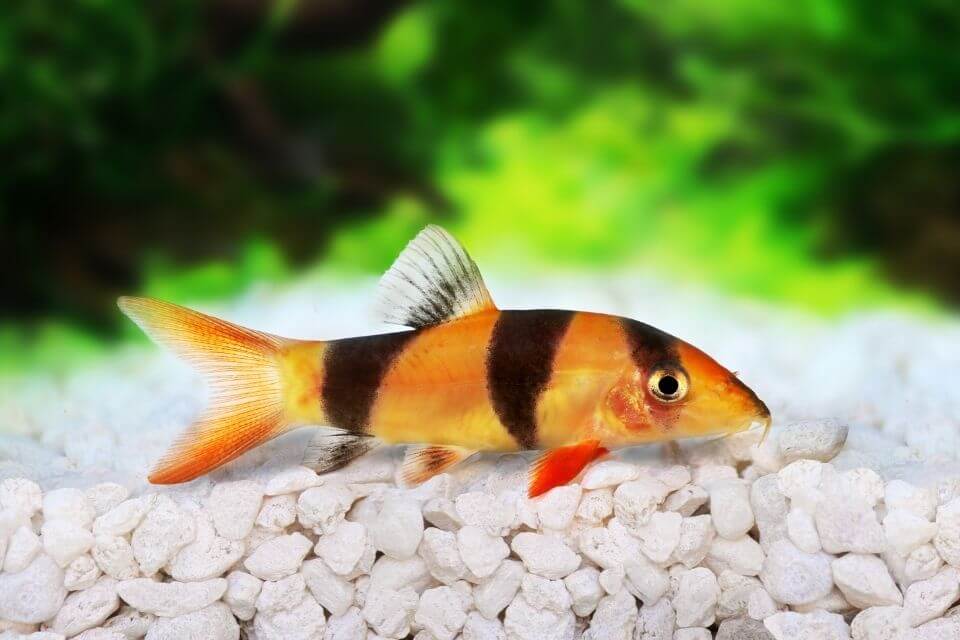
Clown Loach is a particular freshwater fish species that people love to keep as pets in their home aquariums. The best part about these fish species that are not difficult to care for. They are a very peaceful fish species which means you will not be frustrated when keeping them in your own fish tank.
The Clown Loach is a freshwater fish that is so interesting to watch for it is blessed with great looks. This Clown Loach care guide will give a handful of information when you completely consumed this article.
| Quick Facts: | |
|---|---|
| Common Names : | Clown Loach |
| Origin : | Inland waters in Indonesia and islands of Sumatra and Borneo |
| Family : | Botiidae |
| Scientific Name : | Chromobotia macracanthus |
| Care Level : | Moderate |
| Temperament : | Peaceful |
| Social : | Community fish |
| Diet : | Omnivores |
| Size (average) : | 12 inches long |
| Lifespan : | 10+ years |
| Breeding : | Egg layer |
| Minimum Tank Size: | 75 gallons |
| Tank Environment : | Freshwater, Sandy substrate, Rocks and Caves, Driftwood, Lot of Plants |
| Temperature : | 72 – 86 °F (22 – 30 °C) |
| Water Hardness : | 8 - 12 dGH |
| Water pH Level : | 6.0 - 7.5 |
Overview of Clown Loach
The origin of Clown Loach fish is traced back to Indonesia. This fish species belong to the Botiidae fish family and is scientifically known as Chromobotia macracanthus. When the fish is in its adulthood, it is 12 inches long (30 cm) in size. They can typically live up to 10 years in a captivity environment.
When looking to keep Clown Loach, have a fish tank that can fit at least 75 gallons of water. This fish species is a carnivore and desires to be in a temperature between 72 °F to 86 °F (22- 30 degrees Celsius).
Keeping the temperature around 78 °F is the optimal condition for them to thrive well in a captivity environment.
Origin, Distribution, and Availability
Clown Loach fish originates from Indonesia. They found in the island rivers; Borneo, Kalimantan, Malaysia, and Sumatra. When the spawning times come, these fish moves to areas that are flooded where they flow in the streams.
They love being in water that flows like being around plants. During the dark, they are very active but when daylight hits, they hide behind rocks and plants.
Once they are found as interesting fish species that you can keep the captivity, they are bred commercially and made available to other parts of the world for aquarium use.
Most of the aquarium pet stores carry Clown Loach for sale so it is not that hard to find Clown Loach for sale locally. There is a good chance that you can buy them online from the reputed fish supplies.
Clown Loach Typical Behavior
The most outstanding behavior about Clown Loach is their peaceful nature. They are very shy if not kept together as they are more comfortable with groups. If you do not introduce more fishes in the fish tank, it will spend most of its time hiding away from you.
These fish can play dead which most of the time is scary especially to the keepers. When it comes to their eating behaviors, their favorite food is snails which you need to have in the tank.
Characteristics of Clown Loach

– Appearance, Colors, and Special Markings
This fish has a pointed nose and some very sharp spines under its eyes. The spines are vital in playing defense. The body of this fish is long and lean which makes it possible for it to move in water with ease.
The color of the body is orange to yellow and the fins are red. This clearly shows that the fish is very colorful, and looking at it would be so amazing. When it comes to special markings, the fish possess a black stripe that vertically runs through its eye and two other stripes on its sides.
– How Big Do Clown Loach Get?
When this fish is in its early stages of life, it is between 2 to 3 inches in size. The reported adult fish length is 12 inches long when Clown Loach is fully grown. That’s a pretty standard size for a fish.
Clown Loach Size will depend on the care you have given to them. When you are rearing any fish species you must provide the optimal care for the best growth of your fish.
– How Long Does It Take To Grow A Clown Loach Full Size?
It takes about two (2) years to get Clown Loach size to 4 to 5 inches long. It will take four (4) years to get Clown Loach max size. The Clown Loach growth rate depends on the tank conditions and the care you have given for them.
– Clown Loach Lifespan
The Clown Loach lifespan is up to 10 years in a captivity environment. This means that you can see your fish grow over the years. But many have been reported that these fish species can live up to 25 years in the wild which is impossible in captivity.
The Clown Loach lifespan also depends on the care you have given them. It is important to give them good care to maximize their lifespan.
Aquarium Care And Conditions For Clown Loach
– Tank conditions and care
When you are setting up the tank, it is crucial that you set the lighting right. This is because these fish are very sensitive to bright light as it makes them shy. Go for darker conditions.
Use clean water as this does contribute to the health of your fish. Install a filtration system to help with filtering any dirt from the fish tank. Changing the water frequently is important to the cleanliness of your fish tank.
These fish species are very sensitive to the environment that is not what they are meant for. Keep off from overfeeding your fish as this means that some food will end up falling on the bottom of the tank and decomposing. Decomposing foods in the tank can lead to the fish tank being smelly and not safe for the Clown Loaches.
– Clown Loach Tank Size
The size of the tank side depends on the capacity of fish you plan on keeping. If it is a large number, let the tank be big. When the Clown Loaches are juveniles, they need to be kept in an aquarium that can fit at least 75 gallons, and as they grow up the tank should be 150 gallons at least for five adult fish.
Clown Loach tank size is important when it comes to the health and grown of your fish because a more spacious tank will keep them less stressed.
– Tank Setup
The tank needs to be lit and this means that when setting up the tank, you need to consider how bright or dull the lighting needs to be. Choose low lighting for the tank is the best choice for you. For the substrate, you can use sand as long as it is soft. They love smooth substrate and make sure there are no sharp edges in the tank.
Using pebbles is also an option for you. When setting up your tank, you can use different decorations like Java Moss, Hornwort, and small rocks. It is also essential for you to set up your tank that replicates their wild environment to feel that they are not in captivity.
This way, the fish tank looks inviting and suitable for Clown Loach fish and they are content.
– Suitable Plants
Plants such as Anubias, Amazon Sword, Bolbitis, and Java Fern are suitable for this fish. These plants will help to replicate the wild environment for your Clown Loaches which, in turn, makes them feel comfortable. Plants are necessary for this fish species as they provide them with something to nibble on when they are idle.
– Water Conditions And Parameters
The temperature of the water in the fish tank needs to be between 72 °F to 86 °F (22 – 30 degrees Celsius) and have a water acidity level from 6 to 7.5 pH. Water hardness should be from 8 to 12 dKH.
What Do Clown Loach Eat?
When they are in the streams, they eat worms, algae, or decaying plants. The moment you have them in the fish tank you must plan the Clown Loach diet. You will need to feed them snails, fish flakes, shrimp pellets, and algae wafers. Feeding them requires you to find the best foods for the sake of their health and nutrition.
This fish can also eat earthworms and always remember that their favorite food is snails. Because Clown Loach eats snails, you must feed them snails as well. Feed your fish at least four meals a day. When you feeding your fish it is required that you feed them small portions.

Clown Loach Diseases
These fish species are also prone to diseases. The common disease is the Ich which is known as the white spot disease that affects fishes of all kinds but mostly the Clown Loaches. These fish are sensitive to medication and because of this, be careful with the medication you are using on them when treating ich.
The skinny disease is another type of disease that affects your fish. You can notice the symptoms of this disease when you notice that your fish is not adding weight even after feeding. Rather it is losing weight. There is a medication for treating this disease.
You can prevent diseases from getting to your Loaches by ensuring that they are in a suitable environment and are eating a balanced diet.
Gender: How To Tell If A Clown Loach Is Male Or Female?
The male fish has a tail that is shaped differently and also bigger than that of the female ones. The tail fins of the male fish are bent inwards and the female ones have normal tail fins. You can also differentiate the gender of the Clown Loaches based on their sizes.
The females are plumper than the male ones and to be able to know this, you have to be very keen on details.
Clown Loach Breeding
Clown Loach breeding in aquariums is very rare but attempting to breed is not a bad idea. Find a suitable breeding pair of your fish and this means that you have to find pair that has matured. Maturity is measured by how long your fish is.
This means that your chances of successful breeding depend on the maturity of the fish. Keep the pair in a tank with so many plants and well-maintained water. Feed the females severally in a day and it is possible for mating to take place after some weeks.
The fish will lay eggs and after this, the Clown Loaches have to be taken out of the fish tank and let the eggs stay in there until they hatch. When the eggs hatch, the fries start moving around in the water and you can now start feeding them.
Please note that breeding this fish species by yourself is very difficult or almost impossible in captivity unless you have a breeding facility.
Clown Loach Tank Mates
Tankmates are very important for your Clown Loach fish and this is why you need to know about the fish that can live with.
What Fish Can Live With Clown Loaches?
- Other Clown Loaches
- Discus
- Diamond Tetra
- Neon Tetra
- Congo Tetra
- Black Skirt Tetra
- Rainbowfish
- Cherry Barb
- Rosy Barb
- Tinfoil Barb
- Severums
- Plecos
- Gouramis
Avoid mixing aggressive fish species as Clown Loach tank mates as this will lead to them being stressed and end up dead. Don’t mix this fish species and any Goldfishes breeds as this will not end well for your fish.
How Many Clown Loaches Should Be Kept Together?
You must keep your fish in groups. They are more comfortable when they are many instead of one or two. You can keep several from 5 to ten fish together for them to be happy and comfortable. When they are a group, they can play together and not shy away from any attention they get.
Are Clown Loaches Aggressive?
This species of fish are not aggressive as they are very peaceful and calm. This means that they cannot defend themselves from aggressive fish which is why you need to keep them safe. They are very sweet and because of this never mix them with aggressive fishes.
Can We Put Clown Loach with Cichlids?
No, it is not a good idea to put them together. We do not recommend that you keep this peaceful fish with aggressive fish species like Cichlids.

Are Clown Loaches Fin Nippers?
Yes, they are fin nippers but only on the occasions when they are stressed or suffering from something. They can be irritated and lead to them nipping on fins. Most of the time in the wild these fish are the ones that have this behavior. You can barely see this fish do fin nipping in captivity
Will Clown Loaches Eat Shrimp?
Clown Loaches do feed on shrimps. The kind of shrimps you feed them is what matters, there are times when this fish will not eat Amano shrimps. Shrimps cannot survive in a fish tank that is inhabited by Clown Loaches. Make it a habit of buying your Clown Loaches shrimp and they will always love their meals.
Do Clown Loach Eat Snails?
Yes, Clown Loach eat snails, because it is their favorite food. When you choosing food for Clown Loach do not forget to feed them snails as treats.
Will Clown Loaches Kill Each Other?
Clown Loaches will not kill each other even with the fighting and playing around. They never use their spines on each other which makes them the best to pet. You don’t have to worry about finding dead Clown Loaches in your fish tank.
They only bluff but not kill each other as they value each other and notice they are one.
Do Clown Loaches Jump?
Yes they do jump and to keep them from jumping out of the fish tank, you can lower the water levels to the size that will be good for them. Don’t let the water be high enough for the Clown Loaches to jump out. They can have the habit of jumping as a result of discomfort or changes in the environment.
This behavior may go on until the fish gets to settle in. Also, install a weighted lid for their tank that will prevent them from jumping out of the tank.
Why Are Clown Loaches So Expensive?
Since Clown Loaches are difficult to breed, they are very expensive to purchase. This is because there happen to be so many things involved in the breeding of these fish species. There is the use of steroids and hormones which require money to purchase.
The use of these things does not necessarily mean that there will be a success. The success rate is high but then again, the babies need to be raised which requires money. This is the reason why they are expensive.
How Much Does A Clown Loach Cost?
You must consider the Clown Loach price before you decide to have them as the fish in your fish tank. A small fish goes for $2 to $10, the medium-sized is sold between $12 to $30, and a large one for $ 100 to $300. With these prices in mind, you can plan on the fish size you want to buy.
Knowing the Clown Loach price will help you come up with a budget that you will use when buying this fish. It is wise that you learn about these fish species before you make any decision of buying.
You will save yourself from so many disappointments when you do so. Buy your fish from reliable suppliers and this way, you can trust that they will offer you the best ones.
Do Clown Loaches like current?
Yes, they do like current as they like to be in waters that support the movement. This is why you need an excellent amount of current in your fish tank which make them the freedom to swim around the fish tank and enjoy their time.
They will not feel like they are being deprived of fun and freedom when there are currents.
Clown Loaches survive in rivers which have current and because of this, you have to offer them the same thing. Get the fish accustomed to moderate current as the high current can prevent them from adjusting in a fish tank that has lower currents.
Final Thoughts of Keeping A Clown Loach
Clown Loaches are the best fishes to have in your fish tank as they don’t possess any troublesome features. Nurturing them would be so much easier for you as they don’t take up so much of your time and they are quiet.
Keeping these fish species means that you will not have a difficult time finding a tank mate for it. Enjoy having Clown Loaches in your home by having an aquarium full of them. Get yourself a Clown Loach for a pet and it will be fun for you and your family.


